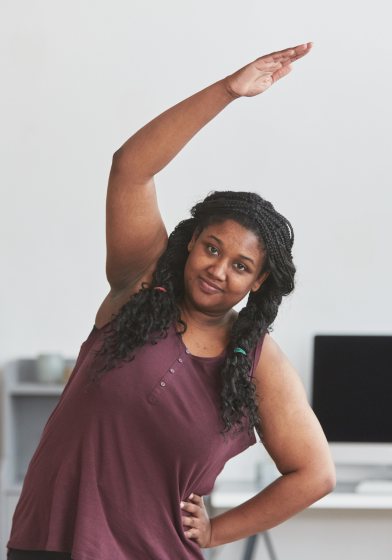Exercise is essential for everyone—especially for people with diabetes. Being active most days of the week keeps you healthy by reducing long-term health risks, improving insulin sensitivity, and enhancing mood and overall quality of life. Most of the time, working out causes blood glucose (blood sugar) to dip. But some people, after certain types of exercise, notice that their glucose levels actually rise during or after exercise. Fear not! There are steps you can take to avoid this.
Adrenaline Can Raise Blood Glucose Levels
Using your muscles helps burn glucose and improves the way insulin works. That’s why blood glucose levels usually come down during exercise. But you might see blood glucose go up after exercise, too. Some workouts, such as heavy weightlifting, sprints, and competitive sports, cause you to produce stress hormones (such as adrenaline). Adrenaline raises blood glucose levels by stimulating your liver to release glucose.
The food you eat before or during a workout may also contribute to a glucose rise. Eat too many carbs before exercising, and your sweat session may not be enough to keep your blood glucose within your goal range.
Strategies to Keep Blood Glucose From Rising During Workouts
Now that you know what causes a blood glucose rise after or during exercise, you may expect and accept it during your next workout session because you know the benefits of exercise outweigh the rise in glucose. But if you’d rather avoid it altogether, here are some strategies that might help:
- Choose moderate-intensity aerobic workouts, or circuit weight training with light weights and high repetitions.
- Practice relaxation techniques such as paced breathing, visualization, or meditation before and during your workout to minimize the adrenaline effect.
- Consider moving your workout to later in the day if you usually exercise in the early mornings. The dawn phenomenon, a natural rise in blood glucose that occurs between about 4:00 and 8:00 a.m., can result in higher levels during morning exercise. The same workout done later in the day is less likely to result in a rise.
- Talk with your doctor about adjusting your rapid-acting insulin or other short-acting diabetes medications before workout sessions that usually lead to a glucose rise.
- Avoid eating excessive amounts of carbohydrate before and during your workouts. Instead, try some yogurt with nuts or peanut butter.
Exercise and Blood Glucose Takeaway
Physical activity is important for everyone with diabetes. Most forms of aerobic/cardiovascular exercise will lower your glucose levels, while activities such as high-intensity training and weightlifting can raise it. Managing glucose levels with any form of exercise is possible once you understand your personal patterns (doing regular blood glucose checks and keeping a workout log can help) and making adjustments that make sense to you and your lifestyle.




